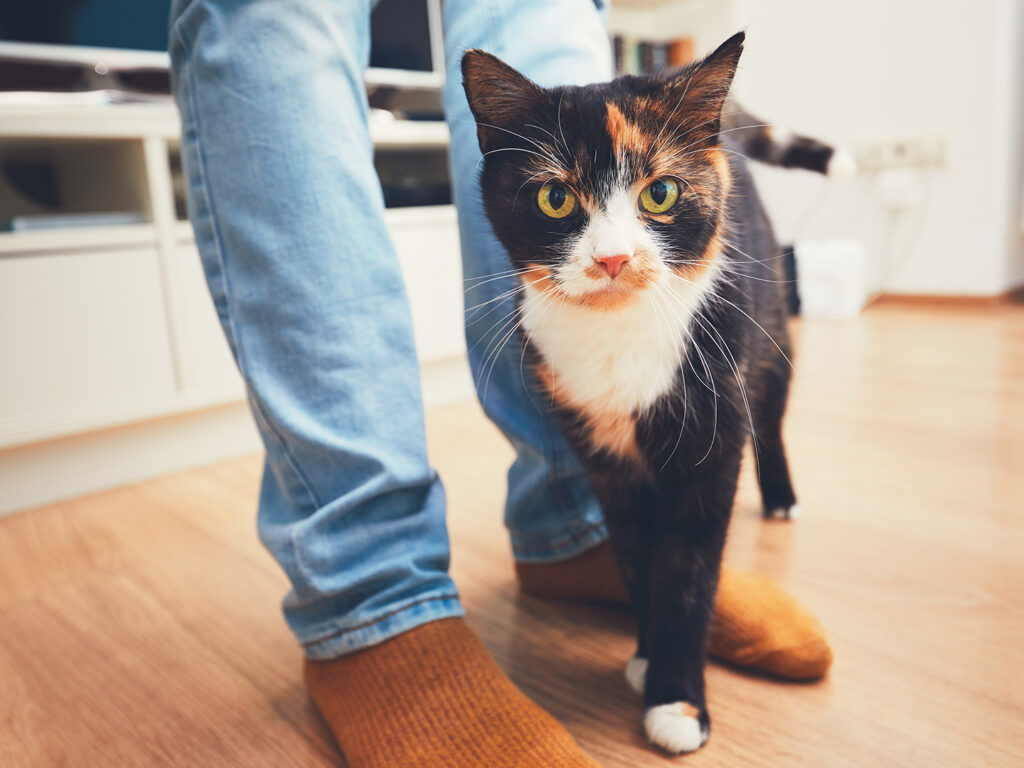Finding The Right Approach To Socializing Cats

Whether they are a purring housecat or a prowling neighborhood cat, felines react differently to new experiences depending on how they were socialized. Owners can choose to increase their cat’s comfort level in new experiences but should first consider different socialization strategies.
Dr. Stacy Eckman, a clinical associate professor and the associate dean of hospital operations for the Texas A&M School of Veterinary Medicine & Biomedical Sciences’ Veterinary Medical Teaching Hospital, advises owners to adjust how they socialize their cat because each cat will respond differently to a specific approach.
“Just like some humans are introverts or extroverts, cats have different personalities also, so how owners socialize cats depends on the individual cat more than anything else,” Eckman explained.
The key to successful socialization experiences is for owners to gradually expose their cat to new environments, sounds, and situations to determine what works best for them. This will ensure a more positive experience for cats and owners alike.
One of the best ways to socialize cats, according to Eckman, is to allow cats to explore indoor and outdoor spaces; listen to common noises such as vacuums, cars, and dogs barking; and experience small gatherings with a variety of people, animals, and objects.
“Owners should watch their cat’s responses to make sure they feel safe and not overwhelmed,” Eckman said. “If their cat responds negatively to socializing, owners should slow down or stop.”
Eckman encourages owners to visit their veterinarian to help identify their cat’s body language when relaxed. Once they’ve identified this, owners should pay attention to their cat’s body language to determine their comfort level with different socialization methods and adjust the method if needed.
For example, an owner can socialize their cat by bringing them in direct contact with a new person or animal, but their cat may respond negatively. An alternative to this method of socializing is for the owner to present their cat with the new person’s or animal’s scent.
“Offer smells of the particular human or animal that the cat is socializing with by rubbing a towel on the new human or pet and presenting it to the cat,” Eckman explained. “The cat can then grow accustomed to their presence by scent first.”
Eckman also suggested placing cats in a separated space as a way for cats to grow accustomed to new animals without being in direct contact with them.
“Owners should create a barrier that their cat cannot get through such as closing the door to a room,” Eckman said. “Make sure the cat has all the essentials – food, water, and a litterbox.”
While the same socialization approaches can be used regardless of age, Eckman pointed out that kittens will accept these conditions easier compared to cats who grew up without being socialized properly.
“The best socialization period is when they are young kittens, up to 12 weeks old,” Eckman said. “If they are not exposed at younger ages, they become more fearful rather than accepting of new environments, sounds, and situations.”
In the end, each cat may be comfortable staying at a certain socialization level, whether they enjoy being around other people or prefer quiet solitude. When presenting them with new experiences, ensure your cat is comfortable and happy above all, and they might reward you with a loving purr.
Pet Talk is a service of the School of Veterinary Medicine & Biomedical Sciences, Texas A&M University. Stories can be viewed on the web at vetmed.tamu.edu/news/pet-talk. Suggestions for future topics may be directed to vmbs-editor@tamu.edu.


